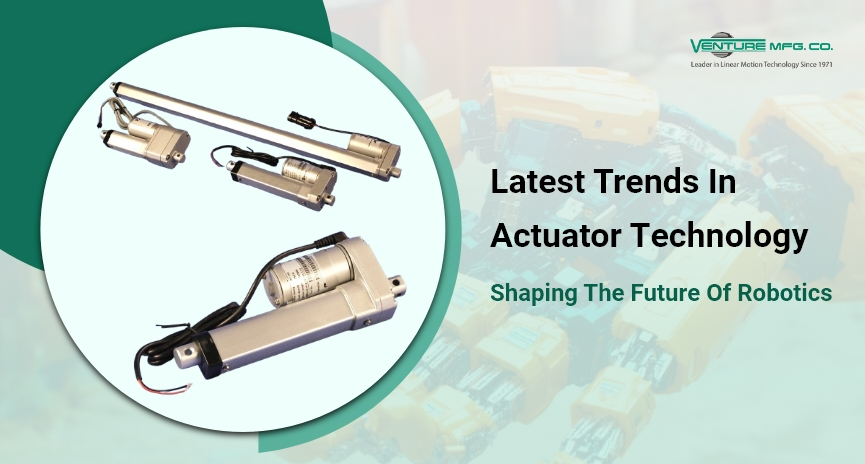
Robotics is a rapidly evolving field that merges intricate engineering with cutting-edge technology to create robots capable of performing exceptionally precise tasks. Two critical aspects of robotics are sensing and motion. While sensors enable robots to perceive their environment, actuators drive their movements, whether navigating obstacles, bending at precise angles, or executing other critical tasks. Actuators are vital components that convert energy into motion, and with advancements in technology, they are driving new trends and innovations in robotics. Curious about what developments are shaping the future of robotics actuators? This post discusses the latest advancements and emerging trends in this area.
Revolutionary Trends in Robotics Actuators: Shaping the Future of the Industry
As robotics continues to advance, actuator trends are emerging, poised to shape the industry’s future with groundbreaking innovations and enhanced capabilities.
- Soft Robotics: This revolutionary shift in actuator technology prioritizes flexibility and adaptability over rigid structures. Compared to traditional actuators, soft actuators are made from materials like silicone or elastomers that can bend and stretch. This allows them to perform tasks smoothly and with precision that rigid actuators can’t match. This flexibility makes soft robotics ideal for delicate operations, such as minimally invasive surgeries, where they navigate the human body with minimal disruption, and agriculture, where they handle fragile crops without causing damage.
- Bio-inspired Actuators: These actuators are pushing the boundaries of robotics by emulating the functionality of natural systems. Experts are developing synthetic muscles that will replace biological muscles, offering high force generation with minimal energy consumption. These muscles are like actuators that mimic natural movements, enabling robots to perform tasks remarkably efficiently. Examples include artificial muscles that simulate the behavior of tendons and ligaments, allowing robots to undertake more complex and nuanced actions.
- Advanced Materials: Robotic actuators are being revolutionized by advances in material science, resulting in improved performance. Shape-memory alloys and piezoelectric materials can adjust their properties depending on the temperature or electric fields. This adaptability allows for precise and responsive actuator systems. Additionally, the development of nano-actuators, which operate at a microscopic scale, enables robots to perform highly precise tasks in various applications, from biomedical devices to advanced manufacturing processes.
- AI and Machine Learning Integration: Integrating actuators with artificial intelligence (AI) and machine learning is driving a new era of autonomous robotics. AI algorithms can analyze actuator behavior in real time. This enables robots to adjust their movements based on environmental changes or task requirements. Also, this integration supports predictive maintenance, where machine learning anticipates actuator failures, thus minimizing downtime and extending the life of robotic systems.
- Energy Efficiency and Sustainability: A strong emphasis is placed on energy efficiency and sustainability along with technical enhancement. Low-power actuators are gaining immense momentum due to their minimum energy consumption in robotic systems. This is mainly important for applications in remote or battery-operated environments. Additionally, using ecofriendly and recyclable materials in actuator production is becoming more prevalent. This shift towards sustainable practices helps minimize waste and supports sustainable robotics solutions.
- Miniaturization: This is expanding the horizons of robotics by making actuators smaller and more versatile. Small-sized actuators are crucial for developing micro-robots that excel in medical procedures or environmental monitoring applications. Additionally, advances in miniaturization are enhancing wearable robotics, including exoskeletons and assistive devices. These smaller, lighter actuators improve the comfort and usability of wearable robots, making them more practical for everyday use and diverse applications. The trend toward miniaturization is unlocking new opportunities for robotics in both medical and consumer electronics domains.
The future of robotics actuators is brimming with exciting innovations and evolving trends. As these advancements continue, robots may become more efficient, intelligent, and versatile. Selecting high-quality actuators that are easy to integrate is crucial for optimizing performance of the robots. For those seeking reliable and top-notch actuators, Venture Mfg. Co. stands out as a trusted name in the industry. With their extensive expertise and commitment to customer support, they offer both technical assistance and exceptional service, ensuring you get the best components for your robotics and automation needs.
